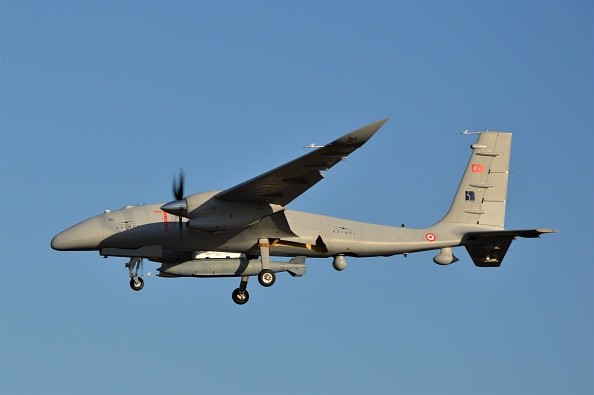
The Akinci armed drones of the Turkish military have prompted plans to consider F-16 Fighting Falcons as armed escorts instead. Such a concept is new where drones will be equal to piloted fighters, and it is a combination of human and AI integration.
Modern jets do not come cheap, and not all countries want them to go to waste. One way to keep them out of harm's way is more affordable loyal wingman drones.
This concept is relatively new, giving both the robot plane and the piloted fighter an equal workload or adaptation to conditions in a 5th generation type of aerial combat.
Akinci armed drones as Turkish uncrewed aerial vehicles
Loyal wingmen are robotic uncrewed aerial vehicles (UAVs) that fly in tandem with a piloted jet, allowing drones to reduce the chances of losing human life in armed combat, reported the Eurasian Times.
Uncrewed vehicles can be equipped with any sensor package, armed payload, or electronic countermeasures on them to adapt for any mission.
The old wild weasel and spotter mission was usually done by piloted planes. Drones can be lost or shot down or be decoys to dupe enemy forces to go after them. Transmitting data on the details in the area for advanced intel, which is worth the loss of a sacrificial drone, noted Defense News.
Perishable assets like UAVS are worth more with the advantages that would cost most with an F-16. Strike packages will be several drones with one F-16 Fighting Falcon. Next-generation jets will have high-tech capabilities, plus Akinci armed drones giving them a new edge.
5th Gen aircraft and Akinci drone tandem
In September 2019, the Su-57, touted to be the F-35 of the Russian Air Force, announced that it would have the S-70 Okhotnik Drone as its air slave. But, an Army Expo in Moscow's outskirts exhibited a surprise in 2020 when the Kronstadt Group made the Grom UAV.
Grom can be paired with the Su-35 and Su-57 as their paired drones to take care of anti-air defenses.
Recently the Royal Australia Air Force and Boeing Australia worked on three UAVs as part of the Airpower Teaming System program. These robotic planes will be paired with F-35 and E-7. So far, tests have been done on engines, runway taxiing for flight tests coming soon.
The XQ-58 is a product that the US Air Force Skyborg program mentioned flying in April, cited AFRL. Several firms are included in the AFRL program for future concepts, like Boeing, General Atomics, and Kratos.
Turkey is doing the opposite
The Akinci drones are the most advanced UAVs that will be considered to become the ones getting babysat by its F-16s, which is against the grain of the drone protecting human-piloted jet. This is odd for most observers who think the drone becomes the lead in attacks, not keeping the crewed plane from harm.
This Turkish robotic drone has 40,000 feet and can hang around for 24 hours. It flies in standoff distances from air defense, with 600 kilometers operation distance. Oddly, the F-16 Fighting Falcon has to be tied to the drone and defend it, putting the human pilot secondary to the Akinci armed drones.
© 2026 HNGN, All rights reserved. Do not reproduce without permission.








